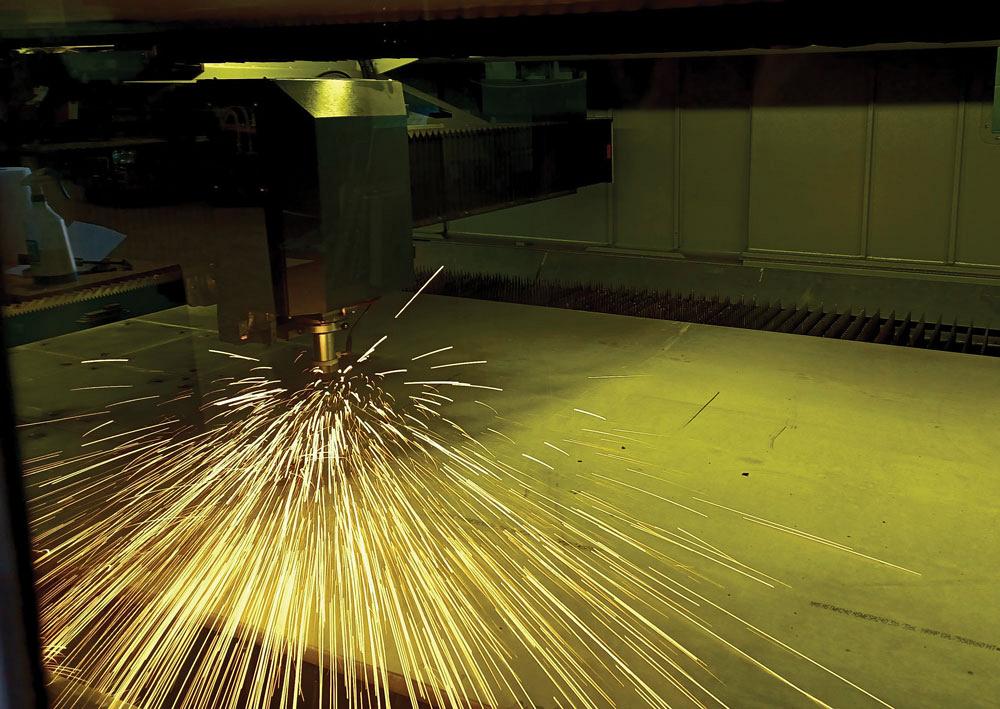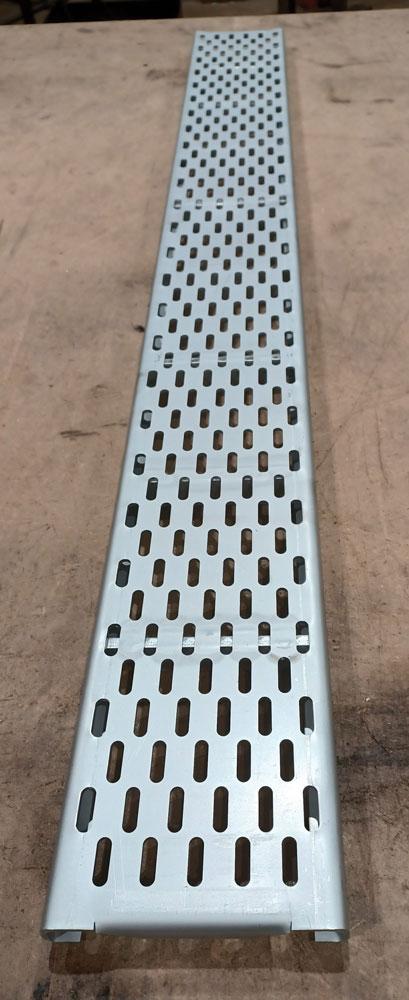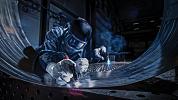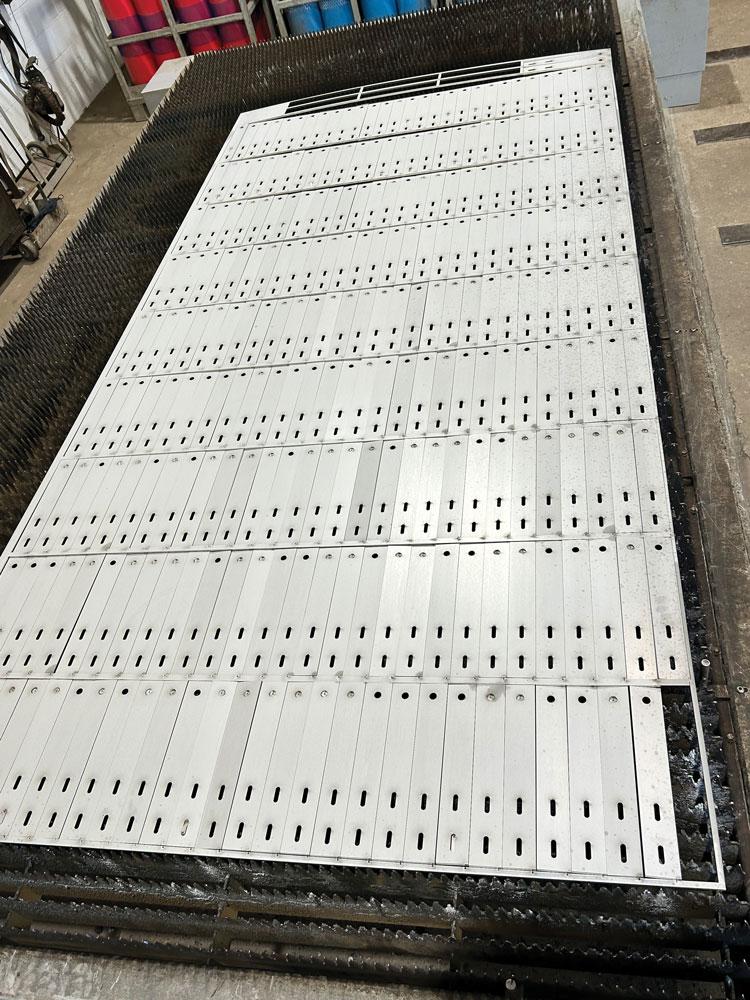Editor
- FMA
- The Fabricator
- FABTECH
- Canadian Metalworking
Adapting to shop additions at McSheffery Industries
Moncton shop grows capabilities, efficiencies with new laser
- By Rob Colman
- May 29, 2023
- Article
- Fabricating

McSheffery purchased a 6-kW fibre laser so that it didn’t have to sub out so much cutting work. The table is 6 by 12 ft. and has a 1 in. capacity in steel, and ¾ in. in stainless and aluminum. Images: McSheffery
Adding to the core competencies of a shop always comes with benefits; automatically, work that had to be subbed out can be done in-house in a timelier manner. But inevitably, it also changes the dynamic of the floor. That’s not a bad thing, but it’s certainly an adjustment.
The addition of a new fibre laser cutting table at McSheffery Industries in Moncton, N.B., is a good example of this.
McSheffery has a long history in the area. It was founded by two brothers from Fredericton in 1968.
“My father was a welder by trade and my uncle was an engineer,” said Chris McSheffery, second-generation owner of the business. “They saw opportunities in Moncton because it is so central to the Maritimes. At that time, they primarily served the food processing industry, but gradually that focus broadened.”
The younger McSheffery, meanwhile, got himself a business degree, and although he grew up working in the business, with two branches of the family involved, he wasn’t sure what his future held.
“My dad encouraged me to join the business after getting my degree, so I started full time back in 1995,” he said.
Focused Output
In the 2000s, the company began to hone its offerings to customers a little more than it had in the past. Although it had always done work in steel and stainless steel, it became CWB certified for aluminum as well.
“At that time [early 2000s], the price of stainless started going through the roof, so many people who were using stainless for jobs switched to aluminum where they could,” said McSheffery. “That was a good opportunity for us to grow our business and develop that specialty in the marketplace. A few years ago, we made the decision to truly focus on stainless and aluminum. We now do fewer miscellaneous or structural jobs. In the process, we’ve built a new client base. Lots of people do miscellaneous metals; it’s competitive and hard to schedule because you are always working around general contractors and other trades. Streamlining the business around a specialty has helped us see steady growth.”
In addition to fabricating, the company also supports customers with design input for manufacturability. A first look at the McSheffery website might suggest that they specialize in stainless and aluminum railing for public and private installations. While that is part of the work they do, much more work is done in food plants and industrial applications, making structural covers for tanks, platforms in plants, stainless tanks for different process, and tabletops for labs. Due to the nature of much of the work they do, posting photos on a public forum isn’t possible.
Laser Addition
McSheffery noted that the shop has been and continues to be busy, with orders that should take them through the better part of the year.

McSheffery does a lot of work in a variety of plants and industrial applications, making everything from structural covers for tanks to tabletops for labs, platforms and floor grates like the one shown here.
Last year, the shop’s workload led to the team thinking about costs and how to manage them. Subbed out work was an obvious concern.
“We were subbing out a lot of cutting work,” said McSheffery. “We had a shear and other older fab machines to do some of the work, but more and more was going elsewhere to be processed. We had a lot of really good suppliers, but having the ability to cut today and have parts out the next day, as opposed to waiting, just made sense. Having that opportunity to control your production means better scheduling and more efficiency in general.”
The company purchased a 6-kW Cy-laser from FMS Solutions in Mississauga, Ont. The table is 6 by 12 ft. and has a 1 in. capacity in steel, and ¾ in. in stainless and aluminum. Although it can cut brass and copper, McSheffery said that they rarely do so.
The new table was a learning curve for the team.
“We’d never had a plasma table or anything similar in terms of controls, so it was new to most of us,” said McSheffery. “The only one on our team who did have experience was George Bates, who heads up our laser operations. He has been working with lasers for the last 30 years.”
The machine was installed last February, and since then it has run consistently at the shop.
“We only run one shift, so it’s not running 24 hours, but it’s busy every day,” said McSheffery. “We have a lot of our own work on it, but we’ve even picked up some clients we cut parts for, which is a bonus. Our intent wasn’t to get into the business of just cutting, but it’s a nice way to fill time in on the table when we are able.”
Finding a laser operator was surprisingly challenging as well. Although the company has a team of two that manages off-line programming, it’s still important to have a skilled operator on the floor.
“As a team, it took us about six months to get used to the laser, but finding an operator was a next-level challenge,” he said. “It took us about five months to find an operator. I assumed we’d find somebody who had run a plasma table, but it was a challenge. We brought in somebody who was running a CNC mill and had some idea of the computer part of operating the table. He's doing alright on it now, but I was surprised that we couldn't find somebody quicker.”
Next Steps
Having the laser has changed the dynamic on the shop floor. For instance, the shop has two older press brakes, a 12 ft. and an 8 ft., but the laser has McSheffery considering the value of investing in tables with more tonnage and more modern controls.
But more than that, it’s sped up flow on the shop floor.
“Before, when you knew you had to wait for parts, you had time to prepare a little bit for the work to come,” he said. “So it has changed the way we process orders. We have to have more parts lined up for bending and manage that flow differently. That’s still a work in progress for us, in terms of scheduling and material flow to get everything to assembly at the right time. But the laser allows us to make choices to help with that process. For instance, we’ll use a variety of sheet sizes to maximize material use or eliminate welding in a part. And we might load the table with a bunch of different material thicknesses to run a variety of jobs at once. On the most basic level, we gang jobs together wherever we can to maximize sheet use and do our best to avoid remnants. Any way that we can make the laser run more efficiently, we do so.”
It’s a challenge for McSheffery to find fabricators for the shop, but the sort of person they need has shifted a bit with the purchase of the laser.
“We probably need more skilled welders or fitters, whereas before we may have been looking for fabricators to cut or bend parts,” he said.
Although there will be growing pains connected to the next steps in building the business, McSheffery now has the flexibility in managing part flow to ensure welding assembly gets what it needs when it needs it. Finding ways to speed up welding production is just the next growth step.
Editor Robert Colman can be reached at rcolman@canadianfabweld.com.
McSheffery Industries, www.mcshefferyindustries.com
About the Author

Rob Colman
1154 Warden Avenue
Toronto, M1R 0A1 Canada
905-235-0471
Robert Colman has worked as a writer and editor for more than 25 years, covering the needs of a variety of trades. He has been dedicated to the metalworking industry for the past 13 years, serving as editor for Metalworking Production & Purchasing (MP&P) and, since January 2016, the editor of Canadian Fabricating & Welding. He graduated with a B.A. degree from McGill University and a Master’s degree from UBC.
subscribe now


Keep up to date with the latest news, events, and technology for all things metal from our pair of monthly magazines written specifically for Canadian manufacturers!
Start Your Free Subscription- Trending Articles
Aluminum MIG welding wire upgraded with a proprietary and patented surface treatment technology

Hypertherm Associates partners with Rapyuta Robotics

Gema welcomes controller

Protected and productive: welding helmet tech

HGG Profiling Equipment BV names Western Canada area sales manager

- Industry Events
CTMA Economic Uncertainty: Helping You Navigate Kitchener Seminar
- May 2, 2024
- Kitchener, ON Canada
Automate 2024
- May 6 - 9, 2024
- Chicago, IL
ANCA Open House
- May 7 - 8, 2024
- Wixom, MI
17th annual Joint Open House
- May 8 - 9, 2024
- Oakville and Mississauga, ON Canada
MME Saskatoon
- May 28, 2024
- Saskatoon, SK Canada
















